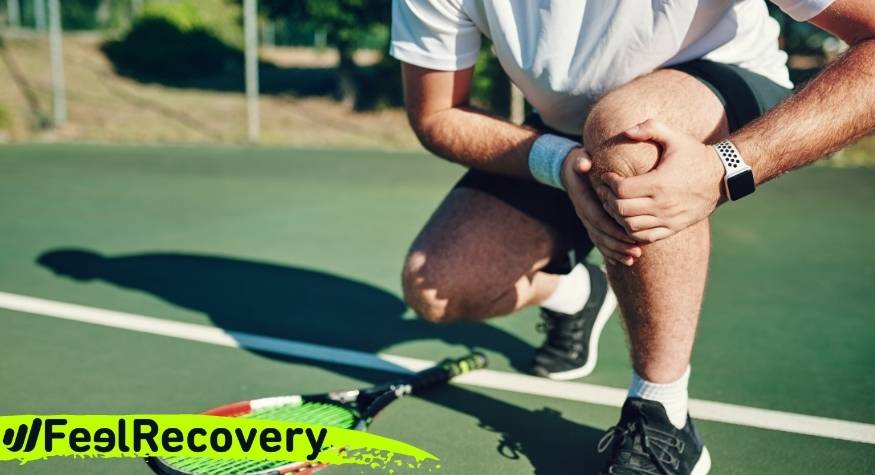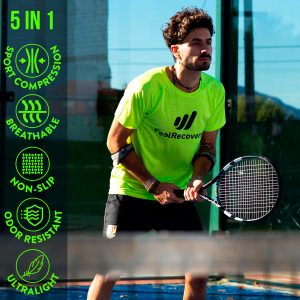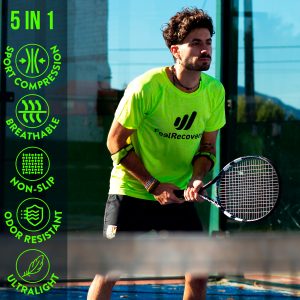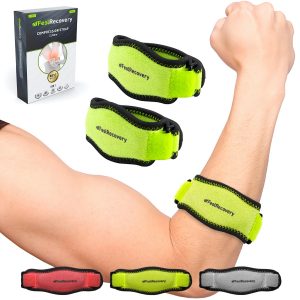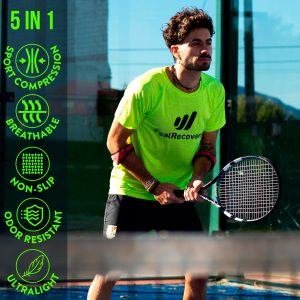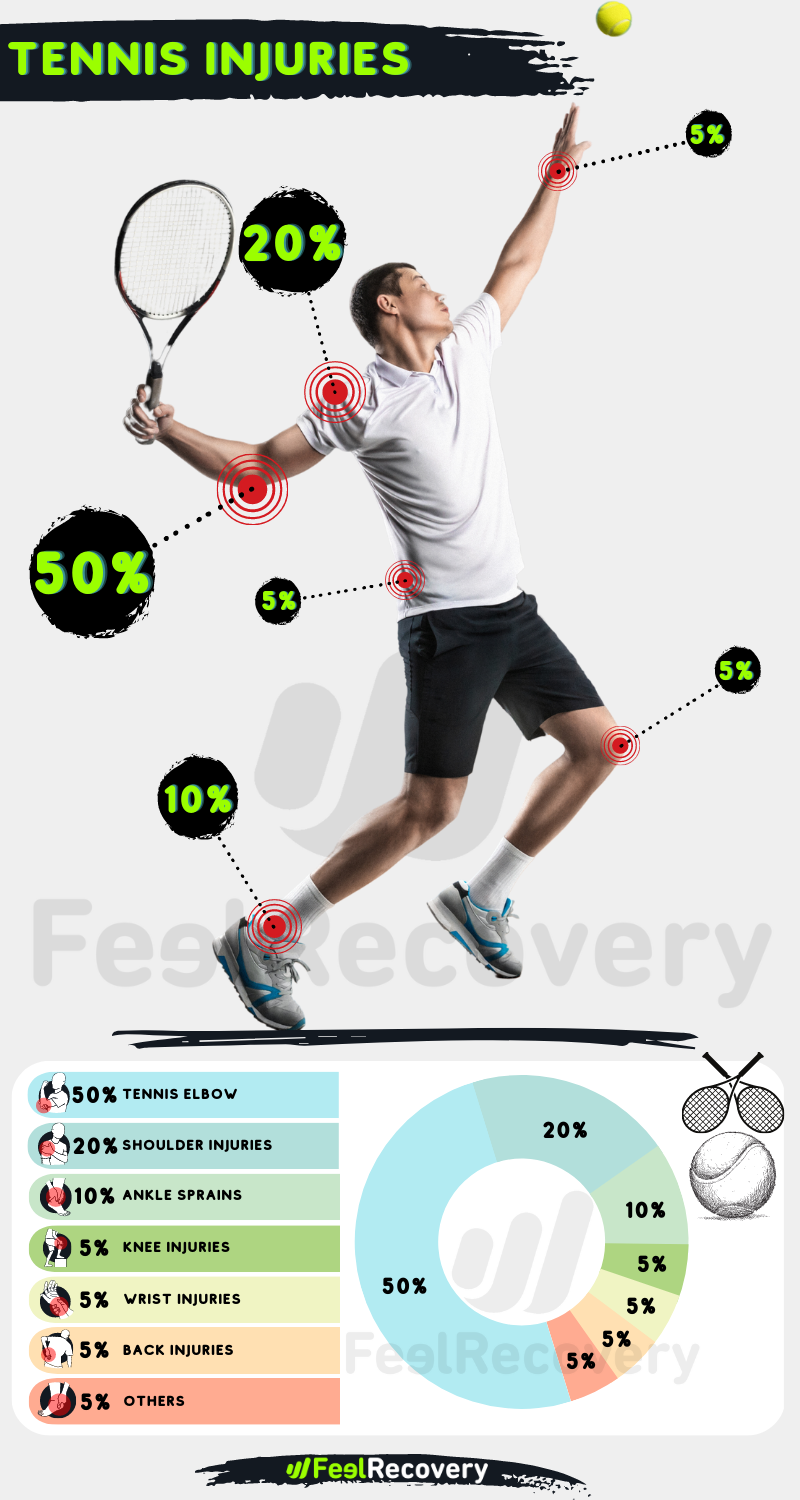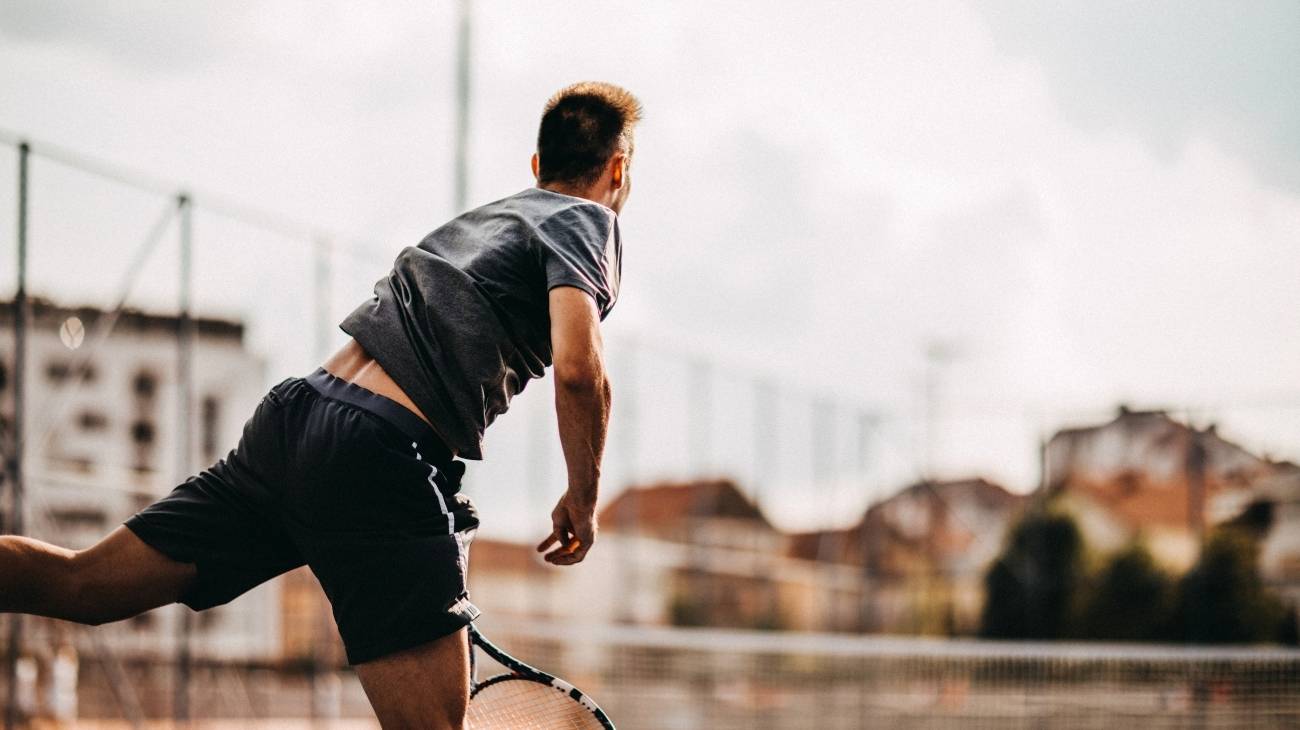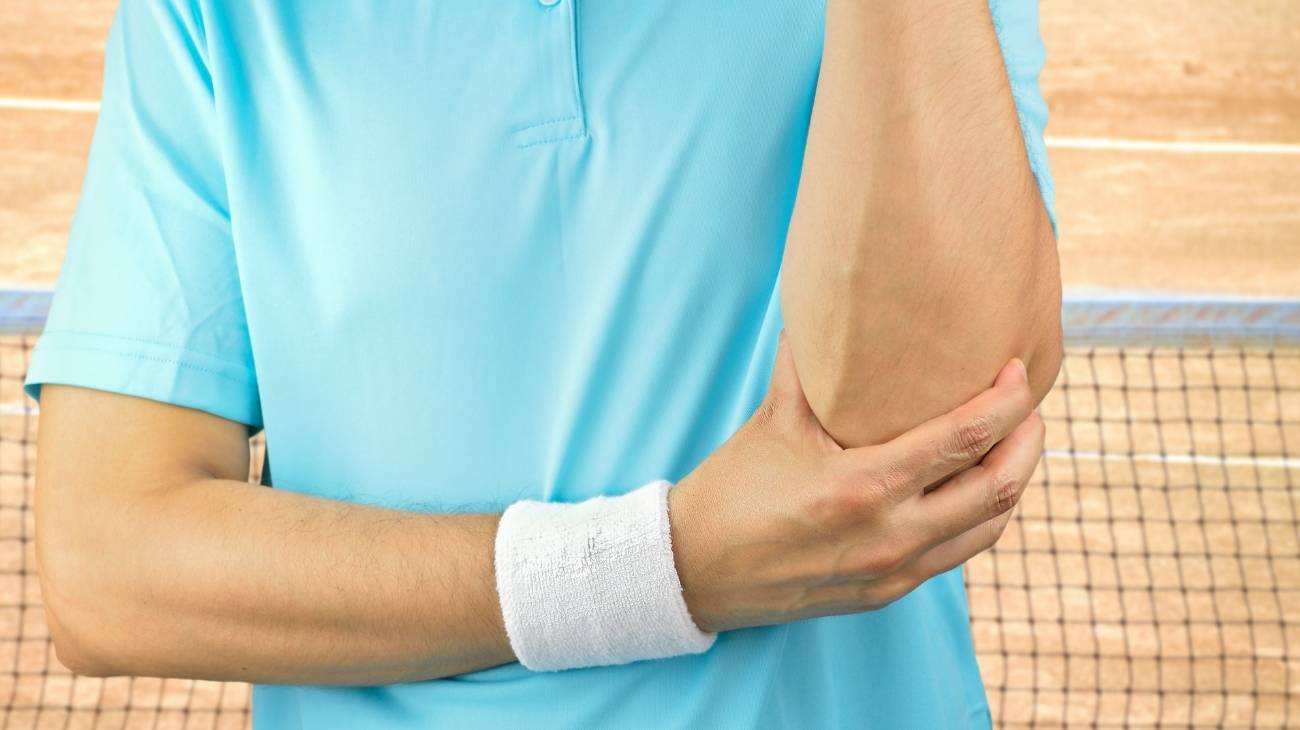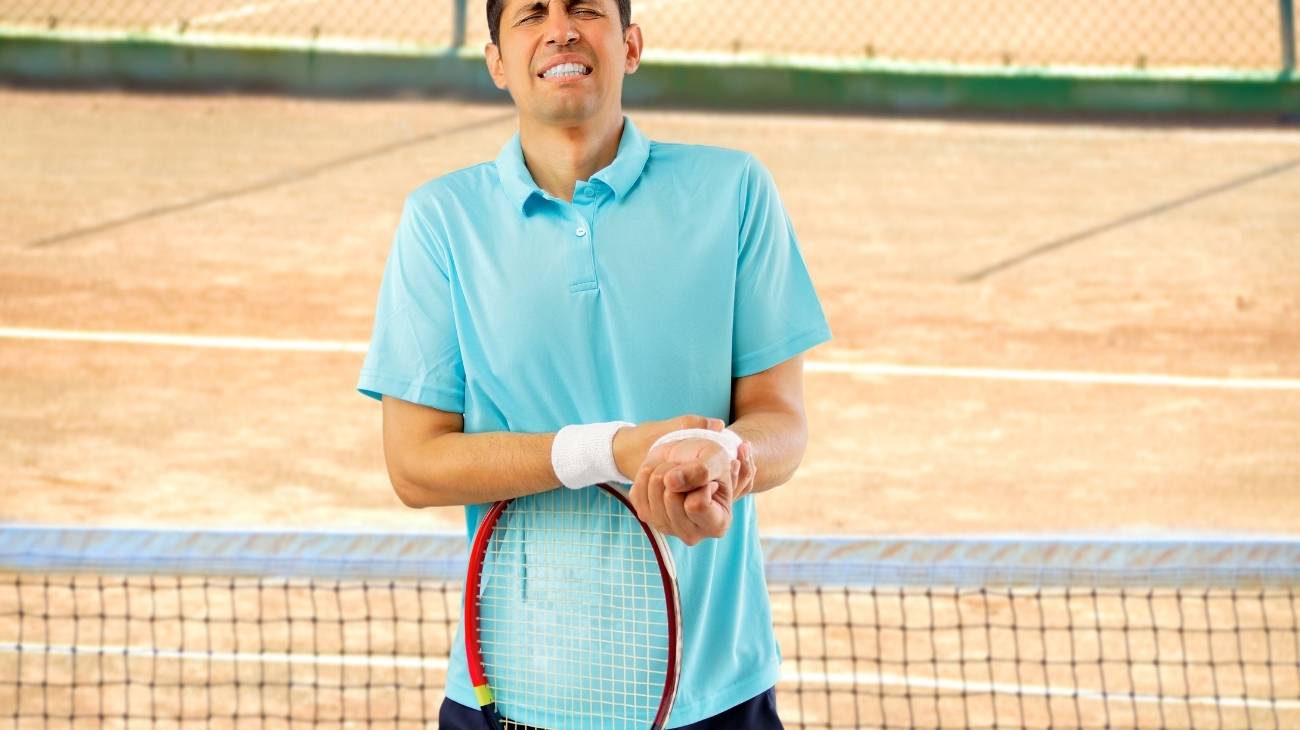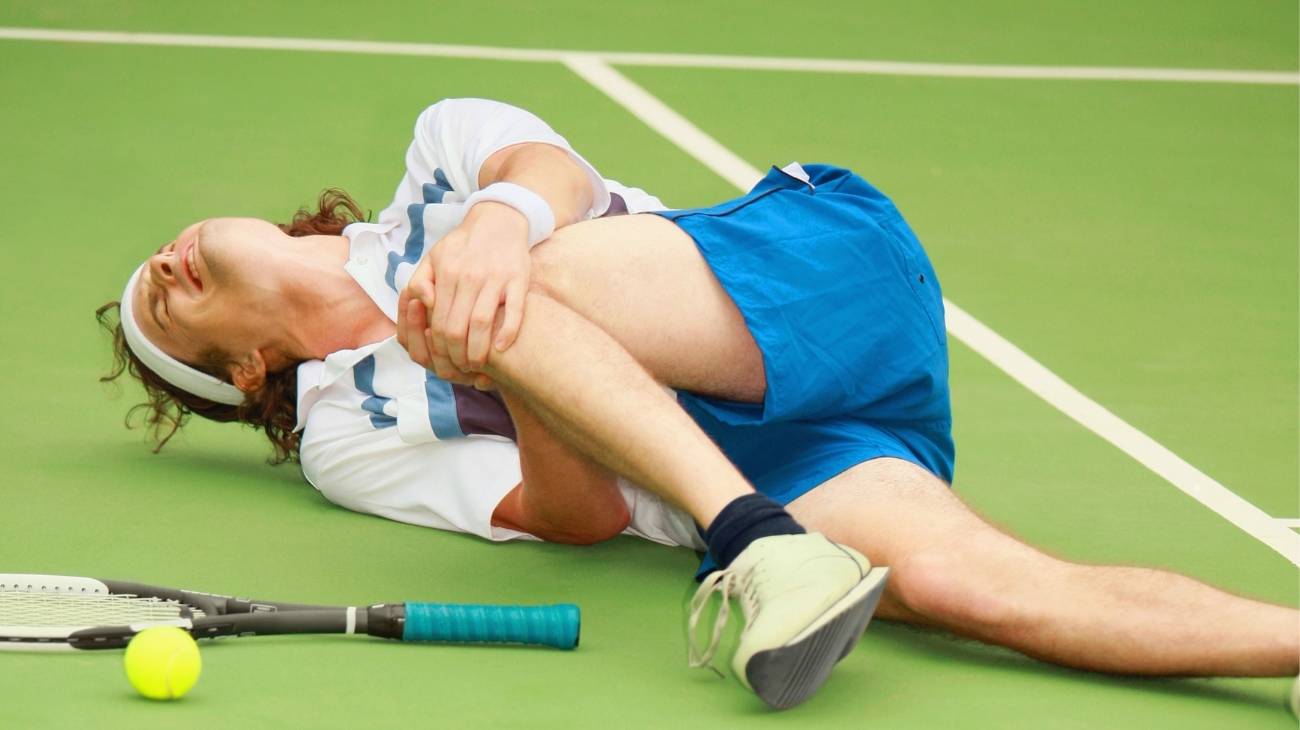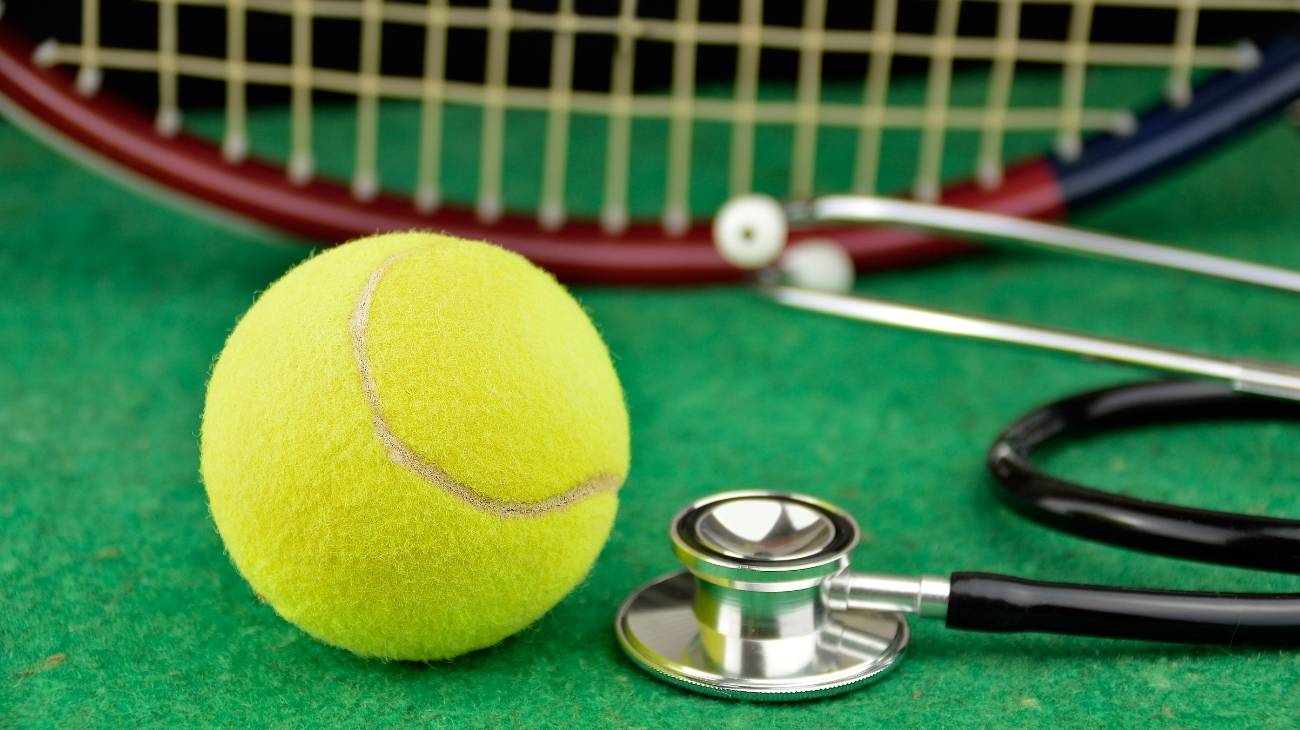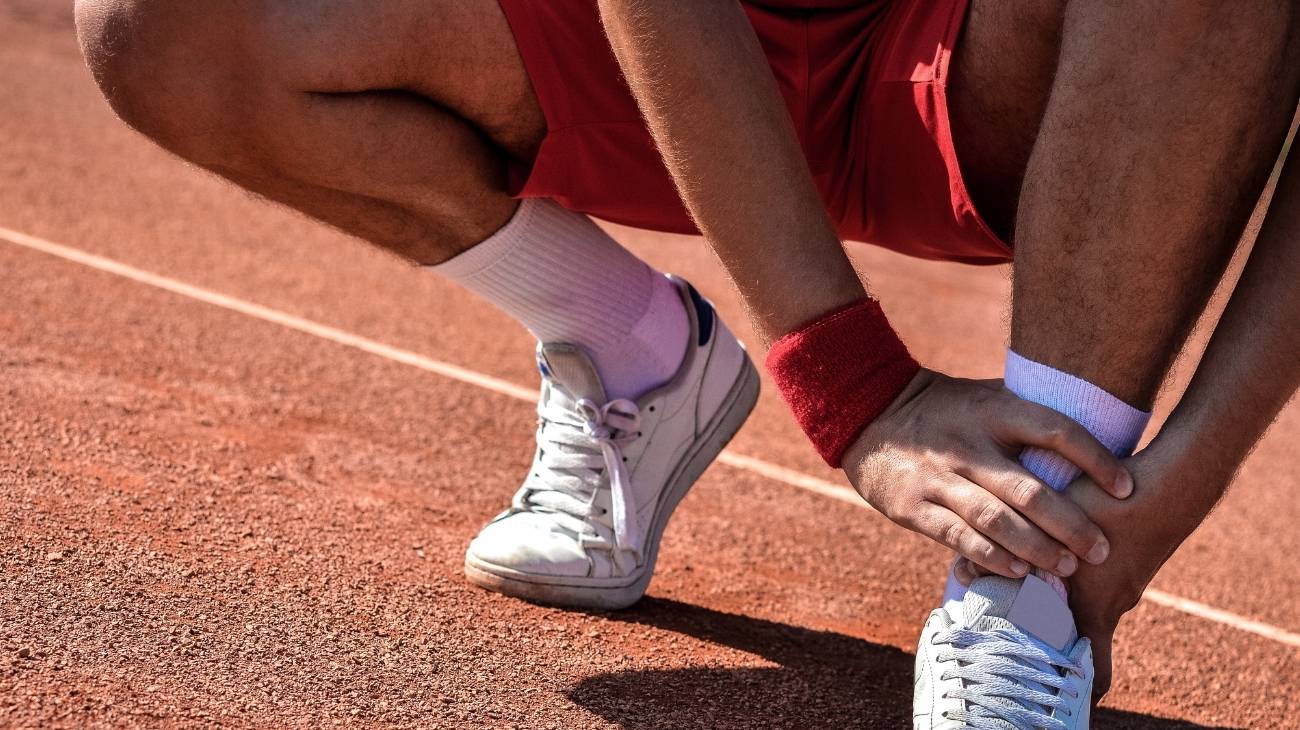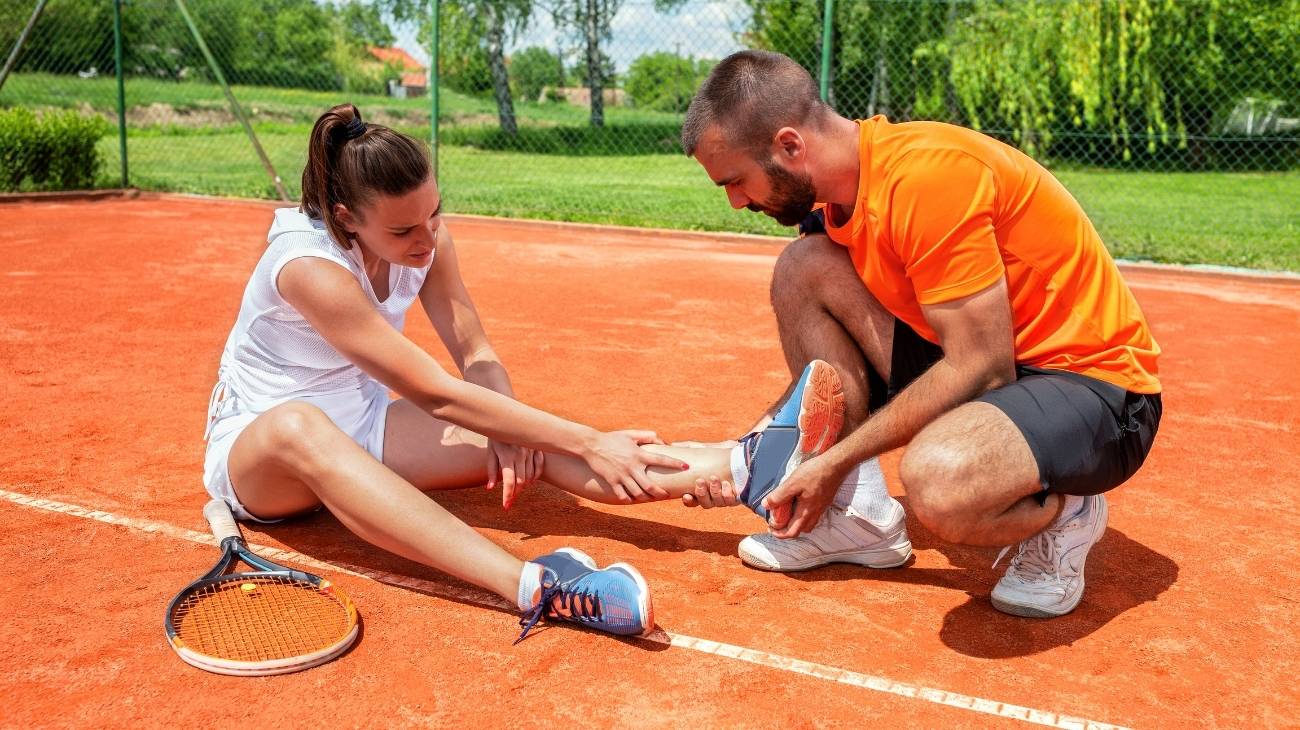Sudden changes in movement and speed, jumps, braking and powerful continuous serves condition sports injuries in tennis. This is very common, especially if our body is not prepared to withstand these sudden changes in strength. They are triggered mainly by the repetition of inappropriate techniques and practices, i.e. overload injuries.
Fortunately, if injuries occur during tennis practice, various treatments can be used. Below, we will tell you about the typical injuries in tennis and what treatments you can apply to serious and chronic injuries. Come and see for yourself!
What are the most common types of injuries when we play tennis?
Most of the injuries that occur in the practice of tennis are due to poor technique. When they occur, they are due to the very forced gestures and actions that are repeated over time in the practice of sport.
This is why there are specific injuries associated with certain movements:
- Shoulder tendinitis: This is an inflammation of the bursa covering the tendons that make up the rotator cuff. Its main cause must be repetitive and forced movements over the head. It generates intense pain, difficulty in making throwing movements and lack of strength.
- Dislocation of the shoulder: This injury is caused by incorrect movements with very forced positions when performing backhands and spikes. Here there is an exit of the head of the humerus from the glenoid cavity of the scapula. It occurs mostly when there is no proper training and technique and on a lesser occasion due to falls and direct trauma.
- Shoulder subluxations: In this case, the head of the humerus does not completely exit the glenoid cavity. It occurs due to repetitive forced movements that over the years cause laxity of the ligaments surrounding the joint capsule. There is a sensation of the bone coming out with spontaneous regression, generating discomfort, pain and a feeling of a dead arm.
- SLAP lesion: It is a lesion that originates in the fibrocartilage labrum that is found around the glenoid cavity. It gets its name from the acronym "Anterior to Posterior Labral Lesion". It is originated by repetitive movements when throwing or by falls with the arm extended causing instability, weakness, rigidity and snaps.
- Tennis elbow: This is the most common pathology in tennis players that is caused by micro tears in the arm's extensor muscles. It is due to an overloading of the joint and by practicing tennis with inadequate techniques. It causes pain, burning and weakness in the grip on the outside of the elbow which is made worse by extending, turning or holding a racket.
- Wrist tendinitis: The wrist also often suffers from the overload generated by poor techniques and lack of preparation in tennis. The impact of repetitive movements and racket strikes on the balls causes inflammation of the tendons that make up the wrist. It causes severe pain, swelling, snapping, weakness and snapping to the rotating, flexing and extending movements.
- Capsulitis: Injuries can also occur to the fingers that cause a lot of pain. They occur as a result of the impact of the racket against the balls, falls and direct trauma that inflame and break the joint capsule. This generates intense pain, increased volume and a great impossibility to move the fingers.
- Lumbago due to herniated discs: These are generated by very sudden impulse, rotational and exertion movements. These repetitive movements generate an impact at the level of the spine which causes compression in the discs and vertebral nerves. These injuries generate strong pain generally in the lumbar region and can radiate to the buttocks and legs with loss of sensitivity.
- Broken menisci: Bad techniques and inadequate practices in tennis players also affect the knees, especially the menisci. The menisci suffer due to sudden turns, extension of the knees and falls on the feet with the legs understood. This causes tears or breaks that generate intense pain, increased volume and difficulty in moving the leg to the extension.
- Injury of the anterior cruciate ligament: This is caused by jumping, falling on one's feet, abrupt stops and very sudden variations in direction. At the level of the ligament, there is a stretch, tearing or a total rupture which generates a strong snap. It also causes intense pain, increase in volume, instability and limitation of movement of the knee.
- Patellar tendonitis: This injury is caused by an inflammation of the patellar tendon between the kneecap and the tibia. They are produced by the impact of jumps, running with abrupt changes of direction and overloading the joint. It causes intense pain when performing movements such as bending, sitting, stretching the leg and jumping.
- Injury to the hamstrings: These muscles can be injured by performing movements such as running very fast with quick and very abrupt stops. This causes excessive stretching and subsequent tension that leads to a total tear or breakage. It manifests itself with intense and sudden pain with a sensation of bursting, bruising, increase in volume, and inability to move the leg.
- Ankle sprain: The ankle joint often suffers from poor technique, excessive strain or sprain during tennis practice. Sprains are caused by a stretching or tearing of the ligaments that support the ankle. They generate pain with movement, bruising, instability of the ankle, crunching and increase in volume.
- Achilles tendonitis: The Achilles tendon is affected when tennis players increase or decrease the intensity of their runs. This causes inflammation at the level of this fibrous band that generates slight pain in the back of the ankle and leg. It is much more common to have stiffness in the morning.
- Plantar fasciitis: Inflammation of the plantar fascia is caused by excessive stretching and tension when jumping or running without proper preparation. It can also be caused by not wearing the right shoes for tennis or by deformities of the plantar arch. It causes pain when you put your foot down, walk barefoot and hypersensitivity in the plantar arch.
- Bone fracture: Although it is not very common to break bones in tennis, they can occur. They are generated by blows, falls, or direct trauma in the shoulder, elbow, hands, ankles and feet. They cause intense pain, increase in volume, cracking and the impossibility of moving the fractured area.
Best products for tennis injury recovery
Bestseller
-
2 Ankle Compression Sleeve (Black/Gray)
£20,95 -
2 Ankle Compression Sleeve (Green/Navy)
£20,95 -
2 Ankle Compression Sleeve (Pink/Bordeaux)
£20,95 -
2 Elbow Compression Sleeve (Black/Gray)
£20,95 -
2 Elbow Compression Sleeve (Green/Navy)
£20,95 -
2 Elbow Compression Sleeve (Pink/Bordeaux)
£20,95 -
2 Knee Compression Sleeve (Black/Gray)
£20,95 -
2 Knee Compression Sleeve (Green/Navy)
£20,95 -
2 Knee Compression Sleeve (Pink/Bordeaux)
£20,95 -
Microwave Wheat Bag for Neck & Shoulder Pain Relief (Hearts)
£24,95 -
Microwave Wheat Bag for Neck & Shoulder Pain Relief (Oxford)
£24,95 -
Microwave Wheat Bag for Neck & Shoulder Pain Relief (Sport)
£24,95 -
Shoulder Support Brace (Black)
£24,95 -
Shoulder Support Brace (Green)
£24,95 -
Shoulder Support Brace (Pink)
£24,95
-
2 Patella Knee Strap (Black/Gray)
£12,95 -
2 Patella Knee Strap (Green/Navy)
£12,95 -
2 Patella Knee Strap (Pink/Bordeaux)
£12,95 -
2 Tennis Elbow Brace (Black/Gray)
£12,95 -
2 Tennis Elbow Brace (Green/Navy)
£12,95 -
2 Tennis Elbow Brace (Pink/Bordeaux)
£12,95 -
Back Support Belt (Black)
£39,95 -
Back Support Belt (Green)
£39,95 -
Back Support Belt (Pink)
£39,95 -
Foot Massage Roller for Plantar Fasciitis (Black)
£20,95 -
Foot Massage Roller for Plantar Fasciitis (Green)
£20,95 -
Foot Massage Roller for Plantar Fasciitis (Pink)
£20,95 -
Ice Massage Roller Ball (Black)
£34,95 -
Ice Massage Roller Ball (Green)
£34,95 -
Ice Massage Roller Ball (Pink)
£34,95 -
Soft Density Foam Roller for Recovery (Black)
£34,95 -
Soft Density Foam Roller for Recovery (Green)
£34,95 -
Soft Density Foam Roller for Recovery (Pink)
£34,95
How to apply RICE therapy to treat first aid injuries in tennis players?
When injuries occur in tennis, very simple techniques can be applied to allow for a quick recovery from the injuries. A very practical and simple protocol is RICE, which has now been updated to become PRICE therapy. Its meaning is Protection, Rest, Ice, Compression and Elevation and should be applied 24 to 72 hours after the injury:
- Protection: The first step is to protect the injured area to prevent the frame from worsening or other injuries from being associated. The protection can be done by using joint supports or orthesis to avoid further inflammation and pain.
- Rest: Then a partial cessation of activities of the affected area must be carried out. It can be combined with a functional bandage to avoid forcing the area but without stopping moving it and thus avoiding stiffness. This rest cannot exceed 48 hours.
- Ice: Afterwards, ice must be applied as soon as possible. Ice is a powerful anti-inflammatory and analgesic caused by vasoconstriction. For it to work it must be applied for a maximum of 20 minutes between 6 and 8 times a day.
- Compression: It is important to make a compressive bandage to improve the blood pressure and avoid the formation of edema. The bandage must be elastic to allow better fixation of the tissues and provide greater stability when carrying out movements.
- Elevation: To complete all these techniques, it must be combined with the elevation of the affected area. Keeping the affected area elevated above the level of the heart reduces blood flow. This allows a better venous return and helps to reduce pain.
Surgical treatments to cure serious or chronic injuries in tennis players
When physiotherapeutic treatments do not succeed in improving the injuries, then it is advisable to opt for surgical treatments. Surgery is always considered the last option, but when much more serious injuries occur, a surgical resolution should be chosen. For this reason, it is necessary to consult an orthopaedic surgeon who is the specialist capable of repairing the joints, damaged tissues and aligning the bones:
Shoulder injuries
Typical injuries at the shoulder level often occur at the ligament level due to inflammation, tears and ruptures. The most common injuries in tennis are shoulder dislocations, microstability, impingement, SLAP injury and compression of the suprascapular nerve.
- Shoulder arthroscopy: The therapeutic technique that allows the visualisation of all the structures of the shoulder joint is arthroscopy. With it it is possible to repair the ligaments, tendons, capsule, bones and cartilages. Also through the arthroscope, new implants can be placed without the need for open surgery. It is a surgical option that allows for simple surgery and guarantees a faster recovery.
Elbow injuries
The most typical injury of tennis players, tennis elbow, occurs at the elbow level. The repair of this injury is outpatient surgery, which means that the person will not be hospitalised.
- Open elbow surgery: Currently this is not the most commonly used method of repairing tennis elbow. In this surgery, an incision is made, the affected tendon is located and then scraped and repaired with anchorage sutures.
- Elbow arthroscopy: Through this intervention it is much easier to repair torn or broken tendons. The incision is small and uses a camera with a light to visualize the damaged structures. This whole procedure is performed under local anaesthesia.
Hand and wrist injuries
Hand and wrist pathologies cover a wide range of diseases. Pathologies range from inflammation, tearing or rupture of tendons, ligaments and capsules, to fractures of bones in the hand and fingers. The surgical treatments that are usually practiced are
- Release surgery or Quervain's surgery: This surgery is designed to allow the tendons to move again normally. An incision is made to remove all the inflamed tissue to prevent it from reproducing.
- Surgery for bone synthesis: In the event of fractures at the level of the bones in the hand, in many cases it is necessary to place wires. The idea is to generate the fusion of the bones of the hand which, being so small, are more difficult to repair.
Back injuries
The spine is a structure of the human body that in sports such as tennis suffers the impact of forced movements. The lumbar spine is the most affected area, and in a large percentage of people disc herniations occur. Surgical treatment is sometimes the best option to avoid disabilities in sportsmen and women:
- Laminectomy: This is the surgical procedure that aims to decompress the disc and the nerves. It has many risks because it can affect the nerves and there is a chance of suffering it again in the future.
- Disectomy: This surgery has the aim of extracting the damaged disc and repairing the indemnity of the spine. Like laminectomy it has its risks of injury to blood vessels, nerves, infections and bleeding.
- Decompression of laser discs: It is a less invasive and safer alternative to decompress the vertebrae of the spine. They have a faster recovery and athletes can return to their activities more quickly.
- Kyphoplasty: This is another novel technique that is designed to reduce the pain produced by the fracture of the vertebrae. It restores the fracture and the height lost as a result of the compression of the fracture.
Injuries to the knee
Knee injuries affect both soft tissue and bone and often cause a lot of discomfort. As mentioned above, they are often caused by overloading the joint. Among the surgical procedures that can be performed to repair the injuries are
- Knee arthroscopy: By means of arthroscopy, the tearing of the anterior and external crossed ligaments, of the patellar tendon and injury of the menisci can be repaired. It is one of the most viable options because it avoids open surgery and allows a faster recovery.
- Open reconstructive surgery of the knee: It is useful to perform reconstructions of torn or broken ligaments by replacing the damaged tissues. It is also useful in case of meniscus injuries. However, it has a slower recovery and risks of infection, bleeding, among others.
Ankle and foot injuries
When the ankle ligaments are not completely restored, surgical techniques must be used to adjust and strengthen them. Among the most common ankle injuries in tennis are ankle sprains and Achilles tendinopathy. Grade III sprain always resolves with surgery, but so does repetitive sprain.
In the case of the feet, plantar fasciitis is usually present. It is very rare that it requires surgical solution but it may be necessary. These are the most frequent procedures:
- Ankle arthroscopy: This procedure is very simple and is considered minimally invasive at the ankle. A small incision is made in the skin and the arthroscope is introduced which will allow the ligaments, tendons, bones, cartilages to be seen. The surgeon also repairs the damaged tissues with this surgical instrument.
- Percutaneous open surgery: This surgery is usually used to repair complicated injuries to the Achilles tendon. However, it is usually associated with greater aggression and pain.
- Surgery to release the plantar fascia: This surgery is based on cutting the plantar fascia ligament to relieve the tension and inflammation of the plantar fascia. It is performed by directly cutting the plantar fascia and sportsmen generally have less pain after it.
References
- Kibler, W. B., & Safran, M. (2005). Tennis injuries. Epidemiology of Pediatric Sports Injuries: Individual Sports, 48, 120-137. https://www.karger.com/Article/Abstract/84285
- Pluim, B. M., Staal, J. B., Windler, G. E., & Jayanthi, N. (2006). Tennis injuries: occurrence, aetiology, and prevention. British journal of sports medicine, 40(5), 415-423. https://bjsm.bmj.com/content/40/5/415.short
- Dines, J. S., Bedi, A., Williams, P. N., Dodson, C. C., Ellenbecker, T. S., Altchek, D. W., ... & Dines, D. M. (2015). Tennis injuries: epidemiology, pathophysiology, and treatment. JAAOS-Journal of the American Academy of Orthopaedic Surgeons, 23(3), 181-189. https://journals.lww.com/jaaos/Fulltext/2015/03000/Tennis_Injuries__Epidemiology,_Pathophysiology,.6.aspx
- Nigg, B. M., & Segesser, B. (1988). The influence of playing surfaces on the load on the locomotor system and on football and tennis injuries. Sports medicine, 5, 375-385. https://link.springer.com/article/10.2165/00007256-198805060-00003
- Bylak, J., & Hutchinson, M. R. (1998). Common sports injuries in young tennis players. Sports medicine, 26, 119-132. https://link.springer.com/article/10.2165/00007256-199826020-00005
- Abrams, G. D., Renstrom, P. A., & Safran, M. R. (2012). Epidemiology of musculoskeletal injury in the tennis player. British journal of sports medicine, 46(7), 492-498. https://bjsm.bmj.com/content/46/7/492.short
- Chandler, T. J. (1995). Exercise training for tennis. Clinics in sports medicine, 14(1), 33-46. https://europepmc.org/article/med/7712556
- Nirschl, R. P. (1988). Prevention and treatment of elbow and shoulder injuries in the tennis player. Clinics in Sports Medicine, 7(2), 289-308. https://www.sciencedirect.com/science/article/abs/pii/S0278591920309364
- Eygendaal, D., Rahussen, F. T. G., & Diercks, R. L. (2007). Biomechanics of the elbow joint in tennis players and relation to pathology. British journal of sports medicine, 41(11), 820-823. https://bjsm.bmj.com/content/41/11/820.short
- Perkins, R. H., & Davis, D. (2006). Musculoskeletal injuries in tennis. Physical Medicine and Rehabilitation Clinics, 17(3), 609-631. https://www.pmr.theclinics.com/article/S1047-9651(06)00031-3/fulltext

